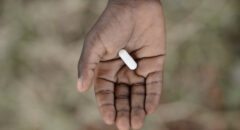
Condoms and dental dams help avert sexually transmitted infections (STIs), including HIV, from being passed between sexual partners. STIs can be transmitted between partners during various types of sex without a condom, including anal sex, vaginal sex, and oral sex.
Having sex without condoms can carry certain perils depending on how many partners you have and the type of sex you’re engaging in.
The Risk of STI Transmission is Higher With Condomless Sex
The Food and Drug Administration (FDA) documents that millions of people in the United States contract an STI each year. Using condoms during sex diminishes the chance of transmission of most STIs, including HIV, gonorrhea, chlamydia, syphilis, and certain types of hepatitis.
It’s possible to contract an STI and not see signs for days, months, or even years. If left untreated, some STIs can cause substantial health problems. This can include harm to major organs, infertility problems, complications during pregnancy, and even death.
RELATED: 3 Reasons To Try The Female Condom
Does STI Risk Differ With Number of Partners?
The risk of contracting an STI is higher for individuals who have multiple sexual partners. People can lower their risk by using condoms consistently and by getting tested for STIs before each new partner.
When sexual partners choose to have condomless sex — or “barrier-free” sex — solely with each other, they are sometimes referred to as “fluid-bonded.”
If fluid-bonded sexual partners have been tested, and the test results indicate no STIs, then participating in sex without barriers is believed to have little to no risk of STIs. This hinges on the accuracy of STI test results and all fluid-bonded partners only having sex with each other.
Remember, some STIs, such as human papillomavirus (HPV), aren’t always included in a typical STI test. Planned Parenthood suggests that individuals who are fluid-bonded still get tested regularly for STIs.
Your physician can tell you more about how often you should get tested for STIs.
RELATED: 5 STDs You Can Get While Using A Condom
Does Having an STI Increase the Chance of Contracting HIV?
The chance of contracting HIV is higher for individuals living with an STI, especially syphilis, herpes, or gonorrhea.
STIs cause inflammation that can trigger the same immune cells HIV likes to attack and allows the virus to replicate more quickly. STIs can also cause sores that make it easier for HIV to penetrate the bloodstream.
Is the Risk of HIV Transmission Higher With Condomless Sex?
HIV can be transmitted via the mucous membranes of the penis, vagina, and anus. It can also potentially be transmitted through cuts or sores on the mouth or other body areas.
Condoms and dental dams deliver a physical barrier that can help stop HIV transmission. When people engage in sex without condoms, they don’t have that layer of protection.
RELATED: The STD Black Women Don’t Talk About (But Should)
Is There a Window Period for HIV Testing?
When an individual contracts HIV, there’s a window period from the exposure to the virus until the time it will show up on an HIV test. Someone who has an HIV test in this window may obtain results that state they are HIV-negative, even though they have contracted the virus.
The length of the window period differs depending on biological factors and the kind of test used. It typically ranges from one to three months.
A person who has contracted HIV can still transmit it to other individuals during the window period. That’s because levels of the virus are more elevated at this point, even though HIV tests may not be able to catch it yet.
RELATED: Don’t Ignore This! Longterm Effects of Untreated STDs
Conclusion
Sex without condoms increases the risk of STI transmission between partners. For some couples, pregnancy is also a risk of condomless sex.
You can decrease the risk of exposure to an STI by using condoms invariably every time you have sex. It also helps to get tested for STIs before sex with each new partner. Your doctor can provide guidance about how often to get tested for STIs.








